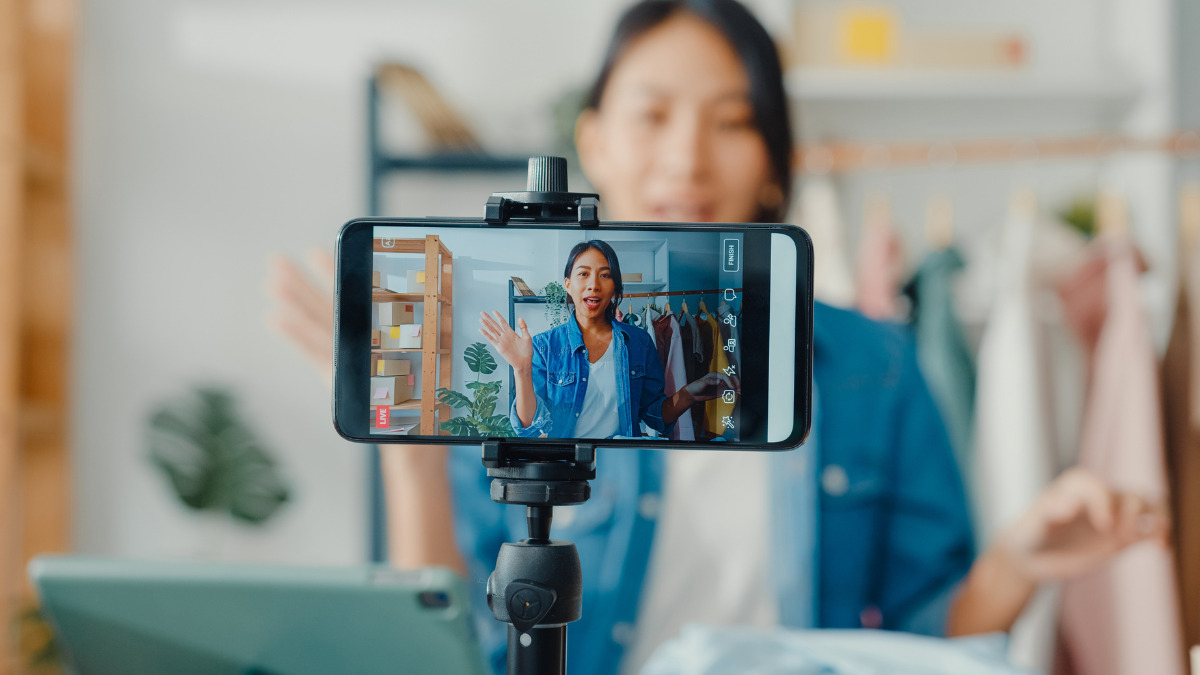

How user-generated content (UGC) shapes customer loyalty

What is UGC?
UGC is original, unscripted content created by your customers for your customers. It reinforces support for your product or brand and is usually published on social media channels such as Instagram and TikTok. The content comes in a wide variety of forms, from reviews, videos, and images, to testimonials or even a podcast.
UGC content is usually created by three different groups: brand loyalists, customers, and employees. Let’s explore them here:
Employees
Slightly different from UGC created by loyalists and customers, but employee-generated content shows the story behind your brand and the value it brings. It could be a video of an employee packing an order or a first-hand video review of why employees love working for your company. It’s genuine behind-the-scenes content that supports the solid establishment of your brand identity across social channels.
Why is UGC important?
Brand placement has changed dramatically since the introduction of social media. You now need your brand to be seen online, as well as in traditional advertising spaces. Because of this, the fight for audience attention is fierce and takes place 24/7, 365 days of the year. What’s more, is that buyers are far more selective about which brands they interact with and purchase from.
So how can brands stand out from the crowd and let their voice be heard by customers in an ever-more competitive market? The answer is simple – authenticity.
Marketers and customers alike are more passionate about brand authenticity than ever before, with over 60% of marketers in agreement that both authentic and quality content is vital to promote brands. It’s very unlikely that any brands will be able to get more authentic content than customer UGC. It’s quickly become the 21st-century word-of-mouth referral, and is seen as the opportunity for customers to directly participate in a brand’s growth rather than being a spectator on the sidelines.
This is a key element, as people naturally thrive off being a part of something greater than themselves, and UGC is the shortcut to a brand’s community. Sharing audience content has the added benefit of deepening the customer/brand relationship which in turn drives further brand loyalty and can move customers up into the highly desirable brand loyalist category.
UGC acts as the beacon of trust between a brand and its customers, with 93% of marketers agreeing that customers trust content created by other customers more than the messages created directly by brands. It’s the ideal next step for your brand to level up its trust score with customers, as your potential customers consider UGC to bear similar weight to that of a recommendation from a friend, family member, or colleague. Over 50% of millennials rely on the recommendations of friends or family before purchasing from a brand. UGC offers just that – a personal recommendation.
What types of UGC work the best?
There’s a wide variety of UGC available from your customers. This varies from images, videos, product reviews, testimonials, social media content, blog posts, and more. Some companies use UGC to promote their products more than others. Think GoPro – all of their advertising is using UGC! They are constantly keeping their YouTube channel up-to-date with UGC directly from their customers. Their top five videos (all filmed on GoPro devices by customers) have racked up over 550 million views combined – which is pretty good considering it costs nothing to produce.
Depending on the type of reviews you receive, you can explore the option of optimizing them to really get the most out of them. For example, using Dotdigital’s review Partner: REVIEWS.IO, it’s possible to add customer reviews to Google search results through aggregated review scores.
So, what works best for your brand? It really comes down to what your product is and how your customers can create content around that product. Whatever content your customers are creating, always ask for their permission to repost their content – failing to do so is the shortcut to killing goodwill and disengaging your brand advocates.
How do reviews help customer retention?
Customer loyalty and retention are incredibly important, no matter what sector your business operates in. You may offer a product that a customer only buys once in their lifetime – but their reviews of that one product can help you to sell it again to new customers. It’s estimated that gaining a new customer requires twice as much work to make up for a lost customer, and reviews can help encourage new prospects to become customers and buy-in to your brand, products, and services.
85% of consumers trust customer reviews as much as a personal recommendation, with a further 89% actively checking online reviews to compare the recommendation to that of their friends. Supported by the power of social media, reviews have the potential to reach thousands more customers than word-of-mouth, and customers who are engaging with reviews are already more likely to be interested in your products and services and in a position to make a purchase.
Reviews can be used in a variety of ways, such as gaining new customers or addressing customer churn. When addressing customer churn, there are three key ways in which reviews can be used:
1. Use positive reviews to boost customer engagement
Your positive reviewers have left you a great review at least once in their lifetime, so how can you keep them coming back again? The best place to start is to ensure you’re keeping these positive reviewers engaged. Interact with them, and thank them for taking the time to review. If you haven’t got that one outstanding review yet, consider incentivizing your reviews by offering customers a change to win a voucher if they leave feedback. Completing this action will support your goal of generating news leads as well.
2. Use negative reviews to address pain points
No one likes them, but unfortunately, negative reviews are part and parcel of running your business. Just because they’re negative doesn’t mean that there’s no value in the review for you to take away and action – they actually give you a wealth of detail on why your customers are likely to leave you.
By going through the negative reviews you can identify where customers are struggling with your product, filtered into the following categories:
- Ease-of-use
- Value for money
- Functionality
- Customer support
These categories may seem quite broad, but they do cover a wide range of topics that matter the most to your customers. The feedback will address what your product does, what challenges your customers have with your product or service, how you as a business respond (and are seen to respond) to those challenges, and if your buyers think that your product is worth their investment.
You’re not limited to only these categories, but they’re a great place to start if you’re a beginner at analyzing your customer reviews.
3. Maintain your engagement with existing customers whilst making changes
Products come, products go, and products change. But while these changes are taking place, it’s still important to keep your customers and brand loyalists engaged so that they remain involved and invested with your brand. It’s therefore important to make sure you’re responding to each and every single one of your reviews, including any follow-up questions where needed.
It’s important to nail down as much information as possible, including:
- How long has the reviewer been a customer?
- What do they use your product for?
- How often do they use the product?
and, if applicable:
- What industry do they work in?
- What is the reviewer’s role in their organization?
The more specific you can get, the more your customers will feel engaged and valued, and therefore more likely to remain a customer with you whilst you’re implementing any changes.
How can Dotdigital help?
Dotdigital offers a number of UGC and review-based integrations which are ready to be added to your martech stack. To find out more about how we can help you incorporate UGC into your marketing strategies, get in touch with us today.
Contents
Will Robertson, Product Marketing Manager


